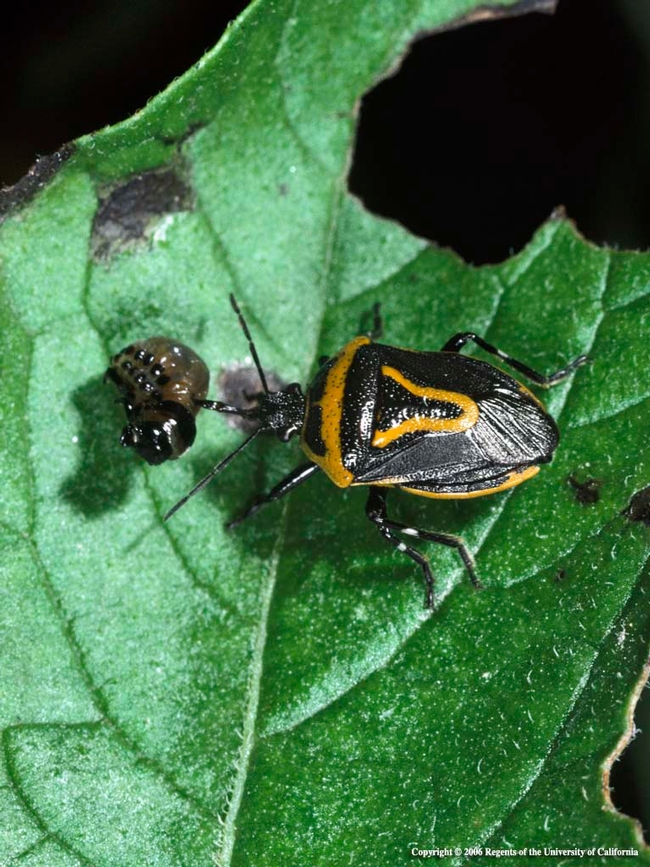Red Bug
By Andrea Peck UC Master Gardener
My hibiscus plant is covered in red bugs, should I be concerned? Rosa M. San Luis Obispo
If It's Not An Ornament, It May Be Red Bug!
While an infestation of red bugs may appear threatening, these fellows are nothing to lose sleep over. Relatively new to North America, red bugs (Scantius aegyptius) were first spotted in Southern California in 2009 and have been making their way to our neck of the woods ever since. They are more nuisance than threatening, though their attire may have you fooled. Scantius aegyptius attract attention with their red-orange coloring offset by contrasting jet-black head, antennae and legs. This aposematic scheme is intended as a warning of indigestion—or worse--for those who may view the insect as a tasty treat.
One flashy creature may not turn heads, especially considering that the average length of the bug is 7-9 millimeters. But, when these pests congregate in party numbers, the creepy-crawly redness may have you thinking you've somehow encouraged guests from the underworld.
Scantius aegyptius is native to the eastern Mediterranean region. They have a particular interest in plants in the Knotweed (Polygonum spp.) and Malva (Malva parviflora) family such as buckwheat, hibiscus, mallow and hollyhock. Generally, S. aegyptius subsist on seeds and seed pods. Often this insect is seen “brightening-up” weedy lots. You may be concerned that a swath of red-wriggliness may set its sights on your backyard. Despite this morbid thought, experts do not see this insect as worthy of heavy consideration.
Should you find a family taking up residence on your favorite plant, eradication is the same as that of the Bagrada, boxelder, or jadera bug which have a confluence of annoyingly similar habits. Believe it or not, this pest can be removed with a hand-held vacuum. Weeds that attract red bugs should be removed and disposed of to prevent infestation. Exclude entry by using floating row covers or screening material with a fine mesh. Pesticides are not recommended.
